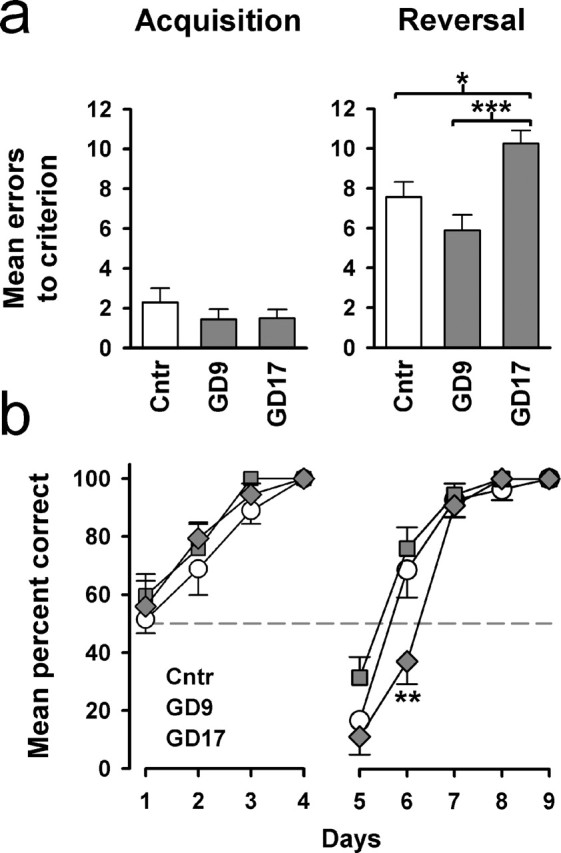Figure 2.

Emergence of perseverative behavior after late but not mid pregnancy immune challenge. Neither GD9-PolyI:C nor GD17-PolyI:C treatment affected the acquisition of a left–right discrimination task, as evident by both the measures of error to criterion (a) and percentage correct (b) on successive training days. A clear selective deficit in the GD17-PolyI:C group emerged in the subsequent reversal training, indicating a perseverative phenotype. A reversal effect was evident in all groups as suggested by the below-chance performance (represented by the dashed line) on the first day of reversal learning (b). The reversal effect persisted into the second day of reversal training in the GD17-PolyI:C group but not the other treatment conditions. n = 9 (males) in each treatment group. All values are mean ± SEM. ∗p < 0.05, ∗∗p < 0.01, and ∗∗∗p < 0.001, statistical significance based on Fisher's LSD post hoc analysis. Cntr, Control.
